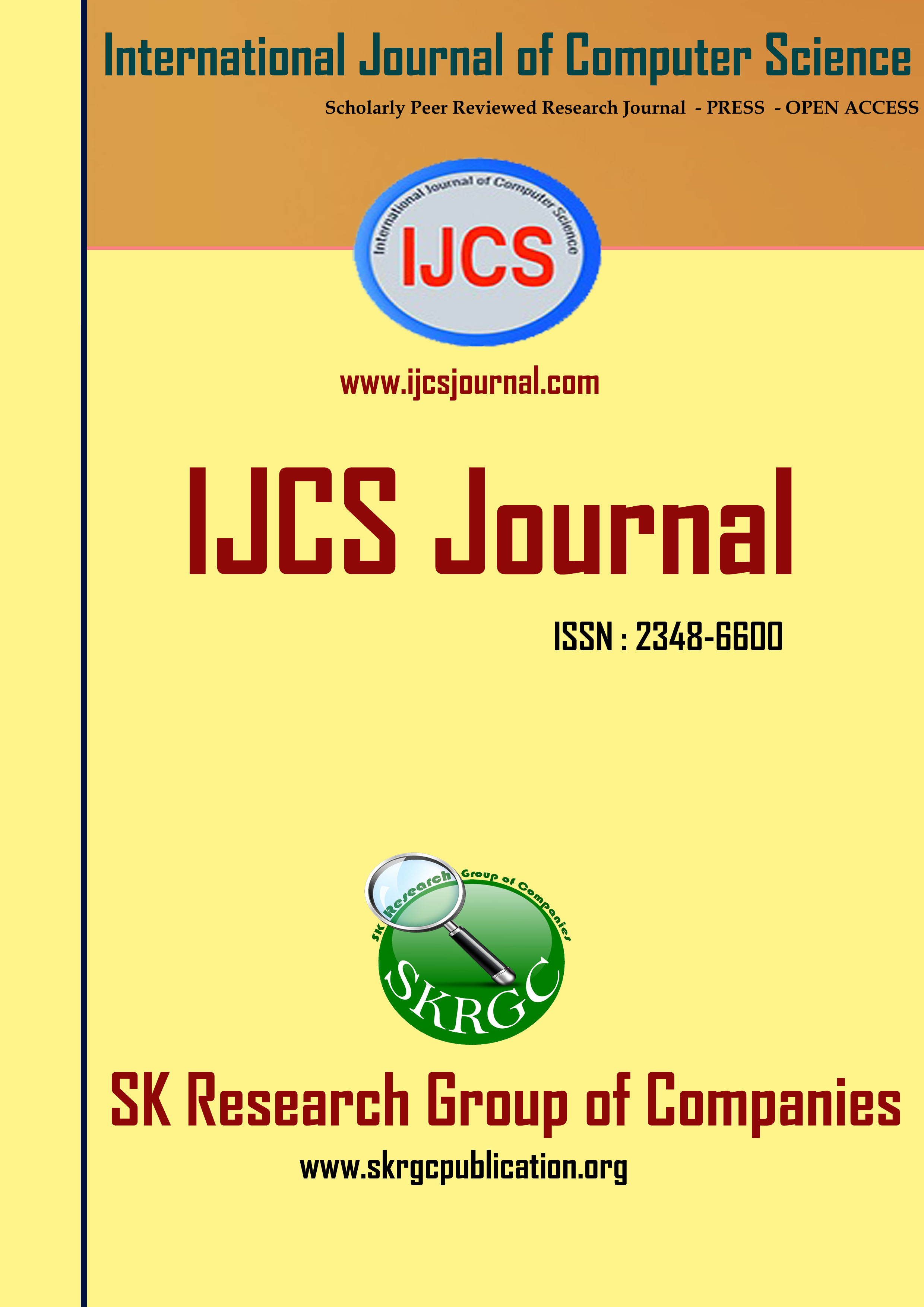A APPROPRIATED THREE-HOP REPULSE COMPACT TO BUILD THE CAPABILITY WIRELESS NETWORKS
International Journal of Computer Science (IJCS) Published by SK Research Group of Companies (SKRGC)
Download this PDF format
Abstract
Hybrid remote systems amalgamating the upsides of both portable impromptu systems and foundation remote systems have been accepting increased consideration because of their ultra-superior. An efficient information directing convention is central in such systems for high system limit and versatility. Notwithstanding, most steering conventions for these systems essentially amalgamate the specially appointed transmission mode with the phone transmission mode, which acquires the disadvantages of impromptu transmission. This paper exhibits a Distributed Three-bounce Routing convention (DTR) for crossover remote systems. To completely exploit the across the board base stations, DTR partitions a message information stream into portions and transmits the fragments in a conveyed way. It makes full spatial reuse of a framework through its rapid impromptu interface and reduces versatile passage clog by means of its cell interface. Moreover, sending portions to various base stations all the while expands throughput and makes full usage of far reaching base stations. In additament, DTR significantly lessens overhead because of short way lengths and the disposal of course disclosure and upkeep. DTR also has a blockage control calculation to shun over-burdening base stations. Hypothetical investigation and reproduction comes about demonstrate the preponderation of DTR in correlation with other directing conventions as far as throughput limit, versatility and portability flexibility. The outcomes withal demonstrate the adequacy of the blockage control calculation in adjusting the heap between base stations.
References
[1] HaiyingShen*, Senior Member, IEEE, Ze Li and ChenxiQiuA Distributed Three-hop Routing Protocol to Increase the Capacity of Hybrid Wireless NetworksIEEE Transactions on Mobile Computing VOL. XX, NO.XX 2015
[2] P. K. McKinley, H. Xu, A. H. Esfahanian, and L. M. Ni.Unicastbased multicast communication in wormhole-routed direct networks.TPDS, 1992.
[3] H. Wu, C. Qiao, S. De, and O. Tonguz. Integrated cell and ad hoc relaying systems: iCAR. J-SAC, 2001.
[4] Y. H. Tam, H. S. Hassanein, S. G. Akl, and R. Benkoczi.Optimal multi-hop cellular architecture for wireless communications.In Proc. of LCN, 2006.
[5] Y. D. Lin and Y. C. Hsu. Multi-hop cellular: A new architecture for wireless communications. In Proc. of INFOCOM, 2000.
[6] P. T. Oliver, Dousse, and M. Hasler. Connectivity in ad hoc and hybrid networks.In Proc. of INFOCOM, 2002.
[7] E. P. Charles and P. Bhagwat. Highly dynamic destination sequenced distance vector routing (DSDV) for mobile computers. In Proc. of SIGCOMM, 1994.
[8] C. Perkins, E. Belding-Royer, and S. Das. RFC 3561: Ad hoc on demand distance vector (AODV) routing. Technical report, Internet Engineering Task Force, 2003.
[9] D. B. Johnson and D. A. Maltz. Dynamic source routing in ad hoc wireless networks.IEEE Mobile Computing, 1996.
[10] V. D. Park and M. Scott Corson. A highly adaptive distributed routing algorithm for mobile wireless networks.In Proc. of INFOCOM, 1997.
Keywords
Hybrid wireless networks, Routing algorithm, Load balancing, Congestion control

